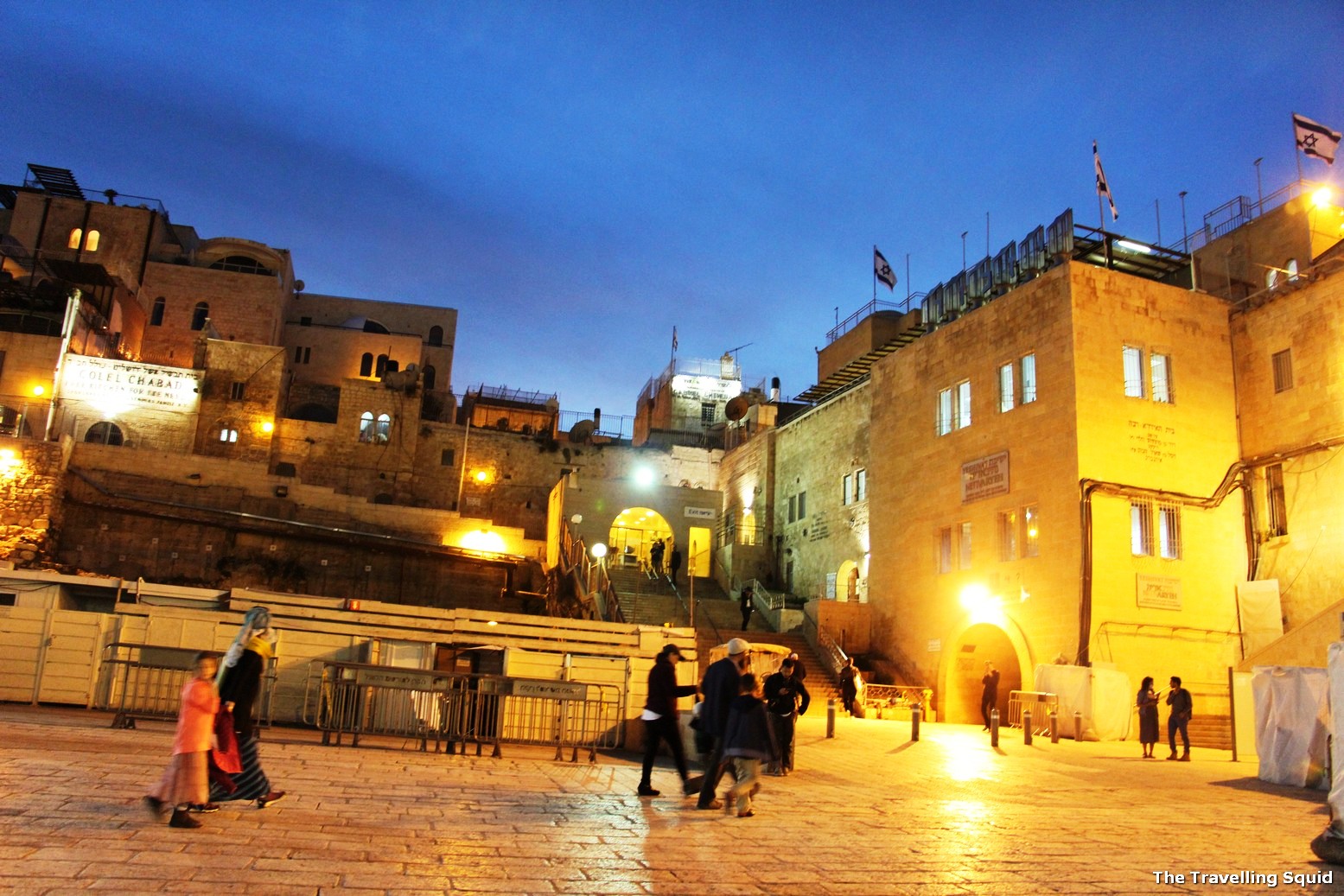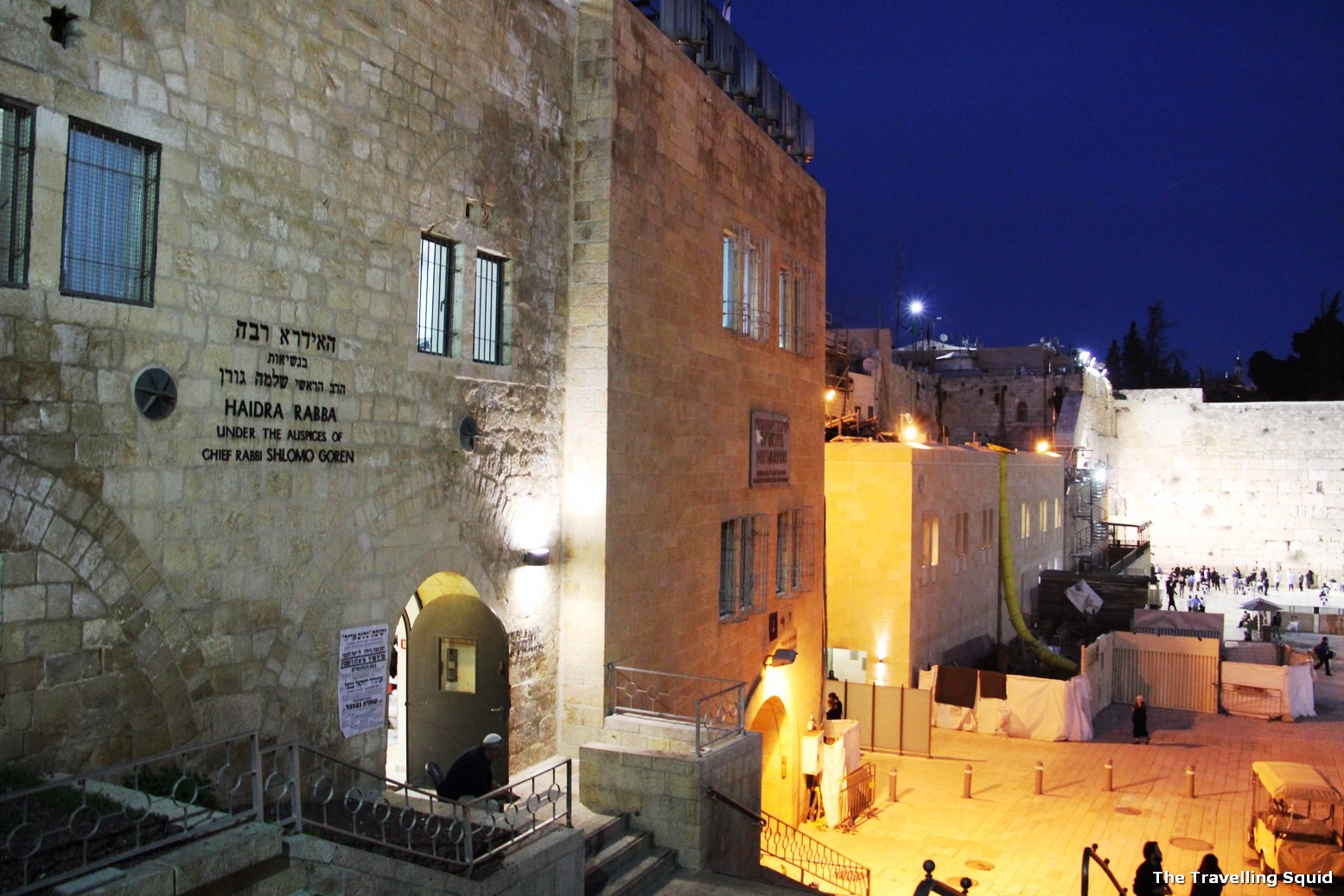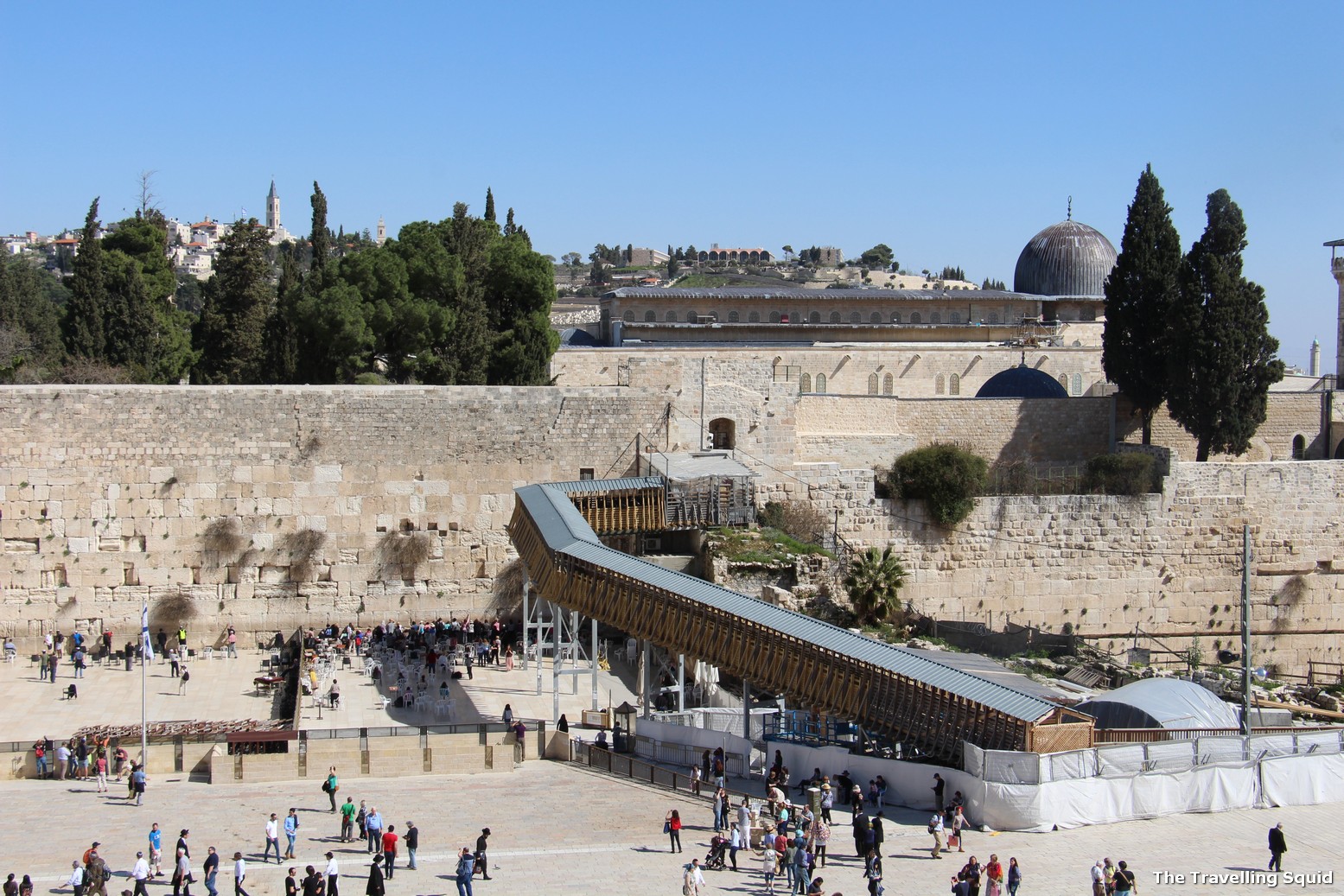Visiting the Western Wall in Jerusalem – A Must See

The Western Wall is one of the must-go sites when you visit the Old City of Jerusalem. It’s nice to go during the day, but if you’re looking to soak up the atmosphere, head there during a Friday evening, right before Sabbath. You’re find Jewish people from all walks of life and ages, singing, praying and laughing. It seems to be a common place of gathering for them.
We were in the Old City were strolling to the Western Wall at about 6pm. You could see Jewish people all dressed up in the appropriate attire (hat and all), in a hurry to get to the Western Wall. One stopped by to ask us for the time.
The wall is divided according to sections, with the men being bestowed a larger section of the wall.

It’s possible to enter the praying area – I entered the female section during that Friday evening. There were some (the elderly) who were seated on chairs facing the wall, holding the Torah while deep in prayer. The younger people, most in their late teens or early twenties, were singing and dancing in a group.
On closer look at the Wall, you’ll find slips of paper stuffed between gaps of the limestone wall. I suppose it contains the hopes and wishes of believers. As for the furry-looking thing that appears on the wall? It’s actually a type of plant.
* * *
Some background to the Western Wall
According to Wikipedia, the Western Wall in Jerusalem is a small segment of the ancient limestone wall, which was originally erected as part of the expansion of the Second Jewish Temple by Herod the Great, which resulted in the encasement of the natural, steep hill known to Jews and Christians as the Temple Mount, in a large rectangular structure topped by a huge flat platform, thus creating more space for the Temple itself and its auxiliary buildings.
The Western Wall is considered holy due to its connection to the Temple Mount. Because of the Temple’s status quo policy, the Wall is the holiest place where Jews are permitted to pray, though it is not the holiest site in the Jewish faith, which lies behind it.

The original, natural and irregular-shaped Temple Mount was gradually extended to allow for an ever larger Temple compound to be built at its top. This process was finalised by Herod, who enclosed the Mount with an almost rectangular set of retaining walls, built to support extensive substructures and earth fills needed to give the natural hill a geometrically regular shape. On top of this box-like structure Herod built a vast paved esplanade which surrounded the Temple. Of the four retaining walls, the western one is considered to be closest to the former Temple, which makes it the most sacred site recognised by Judaism outside the former Temple Mount esplanade.

Just over half the wall’s total height, including its 17 courses located below street level, dates from the end of the Second Temple period, and is commonly believed to have been built around 19 BCE by Herod the Great, although recent excavations indicate that the work was not finished by the time Herod died in 4 BCE.
In case you’re wondering, the Western Wall is also called the ‘Wailing Wall’, referring to the practice of Jewish people weeping at the site over the destruction of the Temples.
The Travelling Squid’s Take

The Western Wall is easily accessible if you follow the signs. It’s also open during more hours of daytime, so it’s pretty convenient to get too. I’ve visited several religious monuments across the world, but this was by far one of the most intense religious experiences, seeing people celebrate, pray and even dance at the backdrop of one of the world’s most religious monuments.
I have a slight tinge of regret, because I missed the opening hours to Temple Mount, one of the holiest sites in the Old City. I will talk more about it in the next post.

Leave a Reply